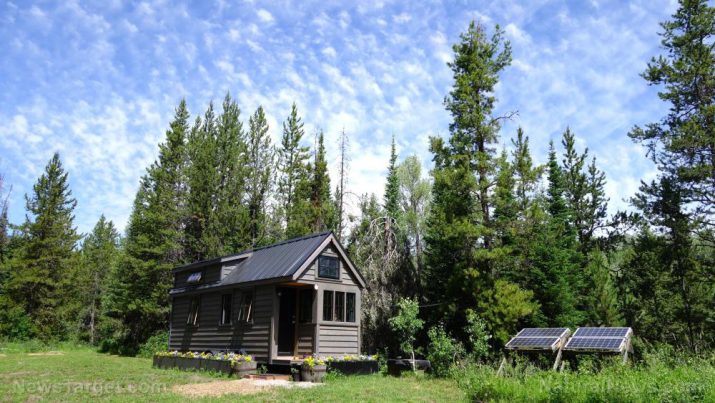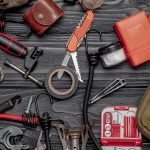
Prepping your doomsday retreat: 4 Factors to consider before SHTF
Tuesday, November 24, 2020 by Zoey Sky
http://www.naturalnewstips.com/2020-11-24-4-factors-to-consider-before-shtf.html

Before disaster strikes, you need to determine if your chosen bug-out location is easy to defend and self-sustainable. (h/t to DoomsdayMoose.com)
Once you’ve decided on a safe and hidden location, check if it meets the four factors of a secure and sustainable survival retreat.
Supply levels
After you’ve built a secure bug-out location, start stocking up on survival essentials. Consider the possible scenarios you may be facing, such as a natural disaster or civil war, and make the necessary preparations to ensure that your cache lasts for as long as you might need it to.
Preppers need to be self-sustainable and a survival garden will give you access to fresh food if SHTF, but you should also have enough supplies for several months. If you’re facing a long-term disaster scenario, you can use your cache without having to leave your retreat. (Related: These are the 4 waves of SHTF refugees you need to look out for.)
Food sustainability
A secure bug-out location needs to be sustainable. Before SHTF, check if your hideout has access to hunting grounds or fishing and wild edibles.
If you can’t hunt, you can still find food if you can fish in bodies of water near your location. Make sure your bug-out location is located near arable land so you can start a survival garden for fresh, nutritious produce.
If your bug out plans extend to months or years, consider taking care of farm animals like chickens and cows that you can use as a sustainable food source.
Access to clean water
In a post-SHTF, access to clean water can spell the difference between life and death.
Try to choose a bug-out location near a clean body of water like a stream or lake, or a patch of land with groundwater. If you’re building on land you own, you also have the option to set up a sustainable water source with a residential water well pump.
Don’t rely on bottled water, although a back-up water stockpile will be useful after SHTF. Bottled water will eventually run out, so you need to set up a well.
Check if zoning laws or other factors will prevent you from installing a well. If they do, build your shelter near another natural water source and figure out how to safely and effectively collect water with minimal supplies like rain barrels or DIY wells.
Test the water in the area to determine that it is safe to drink when SHTF.
First aid, health and safety
Last but not the least, is your bug-out location safe?
Find natural barriers to secure your retreat. Use cacti or holly bushes to prevent hikers or wild animals from wandering onto your property.
Alternatively, you can use man-made barriers like barbed wire or pit traps to keep out any unwanted guests. You should also consider getting firearms, ammo or other weapons you may need to protect yourself and your property when SHTF.
You should also learn how to handle minor medical emergencies. Stock up on health supplies and prep a first aid kit with essentials like:
- Alcohol for cleaning
- Assorted bandages
- Burn ointments
- Essential medications
- Gauze pads
- Safety pins
- Splints
- Thermometer
- Tweezers
- Vitamins
- Wound irrigation syringes
With books on natural cures and treatments, you can find healing herbs to use when you run out of similar items in your stockpile.
Before SHTF, make sure your survival shelter has enough supplies, access to food and clean water and has medical supplies that will help you stay healthy during a long-term disaster scenario.
Sources include:
Tagged Under: Tags: bug out, bugging out, Collapse, disaster, emergency preparedness, food supply, off grid, preparedness, prepper, prepping, prepping tips, self sufficiency, self-reliance, self-sustainability, SHTF, survival, Survival Tips, survivalist
RECENT ARTICLES


Foraging 101: 10 Wild nuts to forage every Fall
By Zoey Sky

Are you eating GMO foods without knowing it?
By Olivia Cook

How to prepare for an EMP strike
By Zoey Sky

Prepping101: How to use basic survival tools effectively after SHTF
By Zoey Sky
COPYRIGHT © 2017 NATURAL NEWS TIPS


